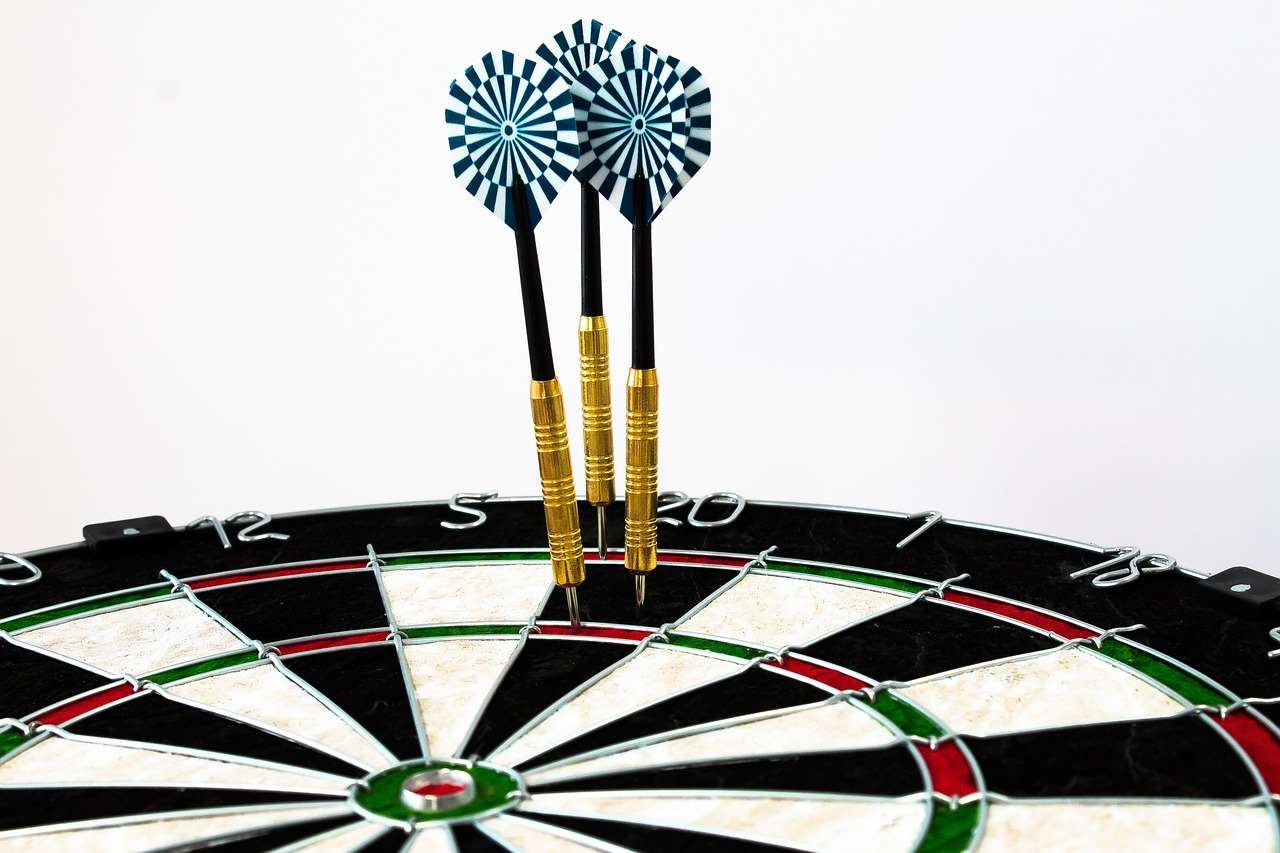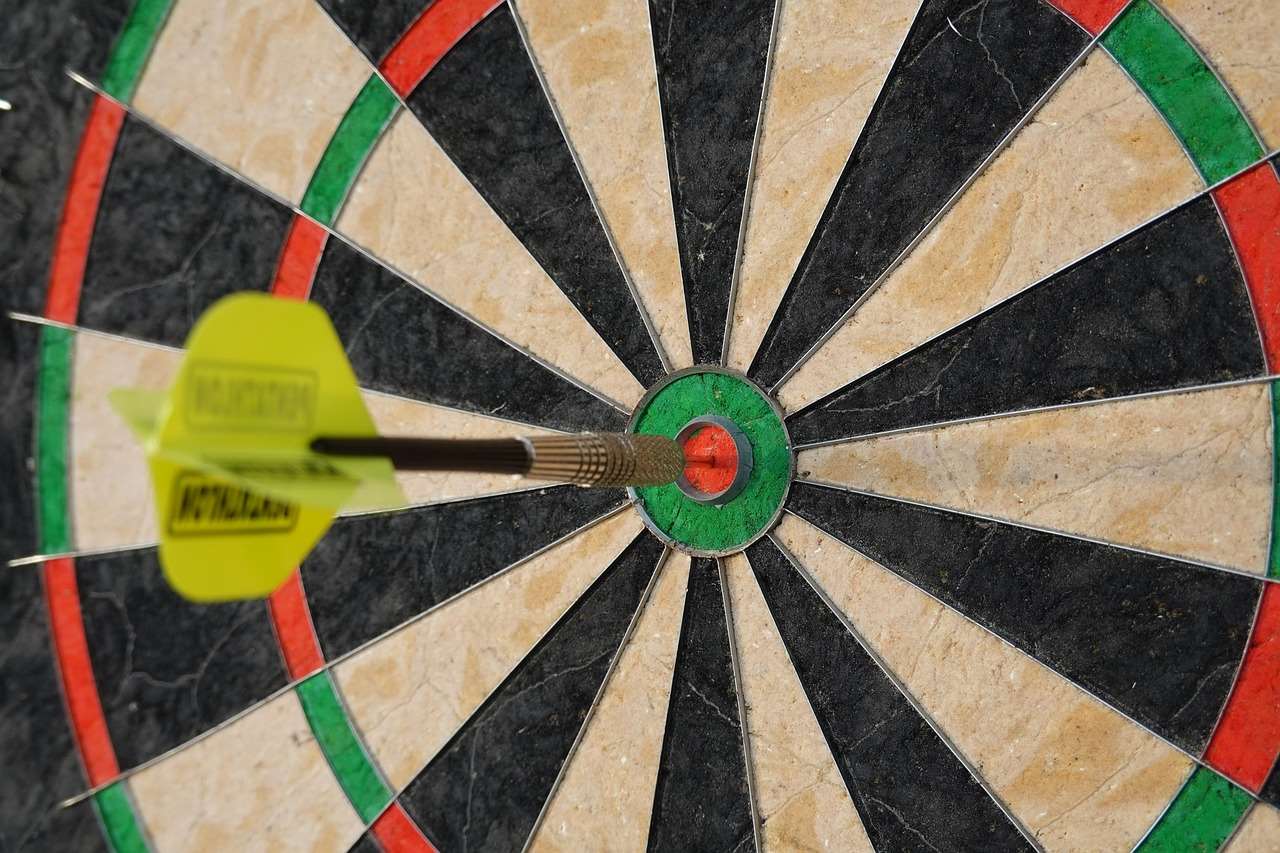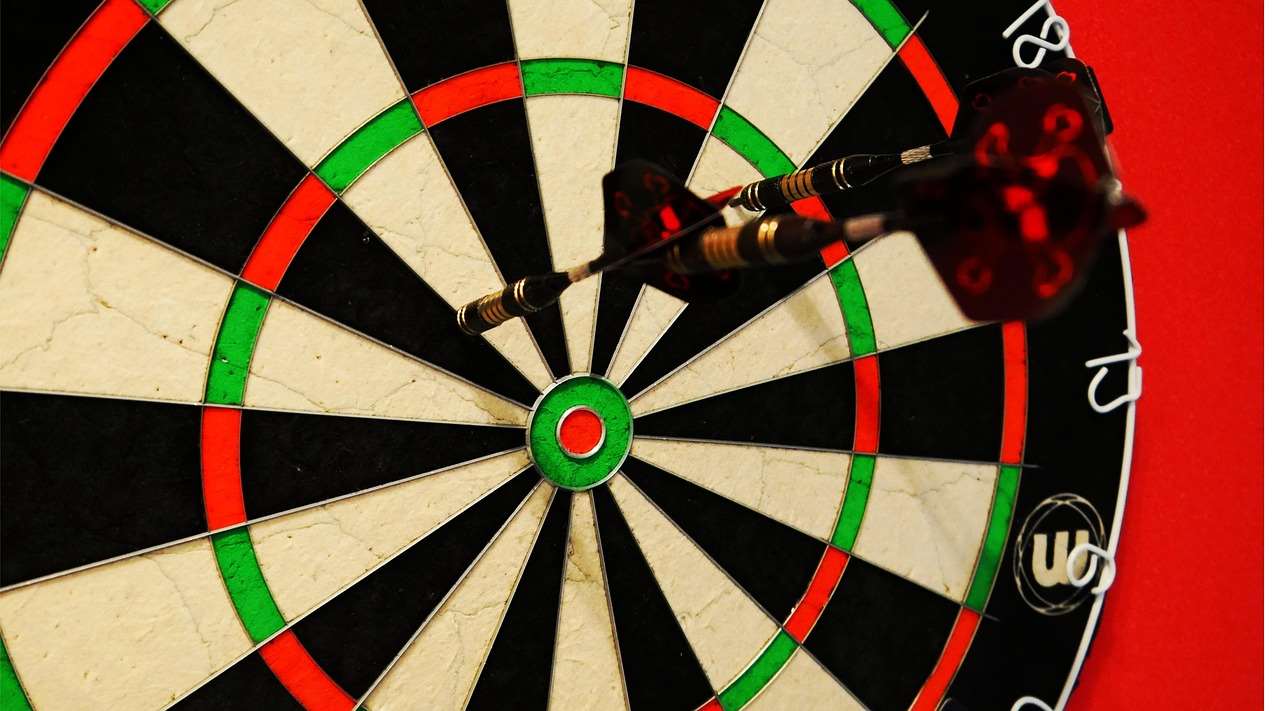Sharpening steel tip darts is essential for consistent scoring and preventing bounce-outs. This article provides a step-by-step guide to effectively sharpening your darts and maintaining their optimal performance. You’ll learn about the necessary tools, proper techniques, and how to care for your darts to extend their lifespan.
⚠️ Still Using Pen & Paper (or a Chalkboard)?! ⚠️
Step into the future! The Dart Counter App handles all the scoring, suggests checkouts, and tracks your stats automatically. It's easier than you think!
Try the Smart Dart Counter App FREE!Ready for an upgrade? Click above!
Why Sharpening Steel Tip Darts is Crucial
Darts are a precision instrument, and even slight imperfections in the point can drastically affect their flight and ability to stick in the dartboard. A dull point is more likely to glance off the board, leading to frustrating bounce-outs and inconsistent scores. Regularly sharpening your steel tip darts ensures they penetrate the board cleanly and consistently, improving your accuracy and overall enjoyment of the game. Furthermore, a sharp point helps to reduce wear and tear on your dartboard, as it requires less force to penetrate the sisal fibers.

Consider a scenario where you’re in a crucial leg of a match. You’ve been practicing diligently, and your form is on point. However, your dart bounces out at the last second due to a dull point. That single bounce-out could be the difference between winning and losing. That’s why maintaining sharp dart points is not just a matter of preference, it’s a critical component of competitive play. Choosing the right dart equipment is also important to achieve the best results.
Essential Tools for Sharpening Darts
Before you begin sharpening steel tip darts, you’ll need to gather the appropriate tools. Using the right equipment not only makes the process easier but also helps prevent damage to your darts. Here’s a list of essential tools:
- Dart Sharpener: A dedicated dart sharpener is the most effective tool. These sharpeners typically have multiple grades of abrasive surfaces for different levels of sharpening.
- Sharpening Stone: A sharpening stone, such as a whetstone or diamond stone, can also be used. Choose a fine-grit stone for best results.
- Magnifying Glass (Optional): A magnifying glass can help you inspect the point of your dart closely to ensure it’s sharp and free of burrs.
- Soft Cloth: A soft cloth is useful for cleaning the darts after sharpening.
- Safety Glasses: While not always necessary, safety glasses can protect your eyes from any small metal shavings that may come off during the sharpening process.
Step-by-Step Guide: How to Sharpen Steel Tip Darts
Now that you have the necessary tools, let’s walk through the process of sharpening steel tip darts step-by-step. Remember to take your time and be careful to avoid injury.
- Inspect the Dart Point: Before you begin, carefully examine the point of your dart. Look for any burrs, flattened areas, or signs of dullness. This will help you determine the amount of sharpening required.
- Prepare Your Sharpener: If using a dart sharpener, ensure it’s clean and free of debris. If using a sharpening stone, lightly lubricate it with water or honing oil, depending on the type of stone.
- Sharpening Process: Hold the dart at a slight angle to the sharpening surface. Gently rotate the dart while applying light pressure. Work your way around the point, ensuring even sharpening. Avoid applying too much pressure, as this can damage the point. This will ensure you are maintaining sharp dart points correctly.
- Check the Sharpness: After a few rotations, check the sharpness of the dart point. You can do this by lightly dragging the point across your fingernail. If it catches, the point is sharp enough. If it slides smoothly, continue sharpening.
- Remove Burrs: After sharpening, use a finer grade of abrasive (if available on your sharpener) or a polishing compound to remove any burrs that may have formed. Burrs can cause the dart to deflect upon impact with the board.
- Clean the Dart: Use a soft cloth to clean the dart point and remove any metal shavings or debris.

Tips for Maintaining Sharp Steel Tip Darts
Once you’ve sharpened your darts, it’s important to take steps to maintain their sharpness and prevent them from becoming dull again quickly. Here are some tips for maintaining sharp dart points:
- Regular Sharpening: Sharpen your darts regularly, even if they don’t appear to be dull. A light sharpening every few games can help maintain their optimal performance.
- Use a Dartboard Surround: A dartboard surround can help protect your darts from damage if they bounce out of the board.
- Avoid Dropping Darts: Dropping darts on hard surfaces is a surefire way to dull the points. Be careful when handling your darts and avoid throwing them at hard surfaces.
- Store Darts Properly: Store your darts in a dart case or holder to protect them from damage and keep them clean.
Understanding Different Types of Dart Sharpeners
There are various types of dart sharpeners available on the market, each with its own advantages and disadvantages. Understanding the different types can help you choose the best option for your needs. Here are some common types of dart sharpeners:
- Diamond Dart Sharpeners: Diamond sharpeners are known for their durability and ability to quickly sharpen dart points. They typically have multiple grades of diamond-coated surfaces for different levels of sharpening.
- Ceramic Dart Sharpeners: Ceramic sharpeners provide a gentler sharpening action and are ideal for removing burrs and polishing dart points.
- Steel Dart Sharpeners: Steel sharpeners are a more traditional option and can be effective for sharpening darts, but they may not be as durable as diamond sharpeners.
- Combination Dart Sharpeners: Combination sharpeners combine different types of abrasive surfaces in one tool, providing versatility for various sharpening needs.

The Importance of Point Angle and Shape
The angle and shape of your dart point can significantly impact its performance. A point that is too sharp can be fragile and prone to bending or breaking, while a point that is too blunt may not penetrate the board effectively. The ideal point angle is a matter of personal preference, but a slightly rounded or conical shape is generally recommended.
When sharpening steel tip darts, focus on maintaining the original shape of the point. Avoid creating a needle-sharp point, as this can increase the likelihood of bounce-outs. Instead, aim for a point that is sharp enough to penetrate the board easily but also durable enough to withstand repeated impacts. Regularly sharpening your darts will contribute significantly to improving your dart game.
Advanced Sharpening Techniques
For serious dart players, mastering advanced sharpening steel tip darts techniques can provide a competitive edge. These techniques involve using specialized tools and methods to achieve a perfectly shaped and sharpened point. One such technique is using a polishing compound to create a mirror-like finish on the dart point, reducing friction and improving penetration. Another technique involves using a dart point re-profiling tool to reshape damaged or worn-out points.

Experiment with different techniques to find what works best for you. Remember to practice on old darts before attempting advanced techniques on your prized set. Proper dartboard lighting is also essential for precision; you can find more information about the types of optimal dartboard lighting online.
Common Mistakes to Avoid When Sharpening Darts
Sharpening steel tip darts is a relatively simple process, but it’s easy to make mistakes that can damage your darts or reduce their performance. Here are some common mistakes to avoid:
- Using Too Much Pressure: Applying too much pressure can damage the point of your dart and make it more prone to bending or breaking.
- Sharpening at the Wrong Angle: Sharpening at an incorrect angle can create an uneven or misshapen point.
- Ignoring Burrs: Failing to remove burrs after sharpening can cause the dart to deflect upon impact with the board.
- Using the Wrong Tools: Using inappropriate tools can damage your darts and make the sharpening process less effective.
- Neglecting Regular Maintenance: Failing to sharpen your darts regularly can lead to dull points and inconsistent performance.

When to Replace Your Darts
Even with proper sharpening and maintenance, steel tip darts will eventually wear out and need to be replaced. Here are some signs that it’s time to replace your darts:
- Bent or Broken Points: If the point of your dart is bent or broken, it’s time to replace it.
- Excessive Wear: If the point of your dart is excessively worn down, it may no longer be possible to sharpen it effectively.
- Inconsistent Performance: If your darts are no longer flying straight or sticking in the board consistently, it may be time to replace them.
- Damage to the Barrel or Flights: While the focus is often on the points, damage to the barrel or flights can also necessitate replacement.
Regularly inspect your darts for signs of wear and tear. Replacing your darts when necessary will ensure that you’re always playing with equipment that is in optimal condition. Remember, maintaining sharp dart points and ensuring overall dart quality is crucial for improving your game. If you need to enhance your dartboard setup, consider the optimal dartboard lighting solutions guide for better visibility and accuracy.
Conclusion
Sharpening steel tip darts is a simple yet crucial aspect of maintaining your equipment and improving your game. By following the steps and tips outlined in this article, you can ensure that your darts are always in optimal condition. Remember to sharpen regularly, use the right tools, and avoid common mistakes. Investing a little time and effort in dart maintenance will pay off in improved accuracy, reduced bounce-outs, and a more enjoyable dart-playing experience. Now, grab your darts, sharpen them up, and get back to the oche! Consider exploring more about different LED dartboard lights benefits to further enhance your dart playing experience.
Hi, I’m Dieter, and I created Dartcounter (Dartcounterapp.com). My motivation wasn’t being a darts expert – quite the opposite! When I first started playing, I loved the game but found keeping accurate scores and tracking stats difficult and distracting.
I figured I couldn’t be the only one struggling with this. So, I decided to build a solution: an easy-to-use application that everyone, no matter their experience level, could use to manage scoring effortlessly.
My goal for Dartcounter was simple: let the app handle the numbers – the scoring, the averages, the stats, even checkout suggestions – so players could focus purely on their throw and enjoying the game. It began as a way to solve my own beginner’s problem, and I’m thrilled it has grown into a helpful tool for the wider darts community.